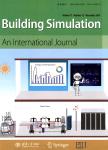A novel point source oxygen supply method for sleeping environment improvement at high altitudes
为在高高度的睡觉环境改进的一个新奇的点来源氧供应方法作者机构:State Key Laboratory of Green Building in Western ChinaXi'an University of Architecture and TechnologyXi'anShaanxi 710055China School of Building Services Science and EngineeringXi'an University of Architecture and TechnologyXi'anShaanxi 710055China
出 版 物:《Building Simulation》 (建筑模拟(英文))
年 卷 期:2021年第14卷第6期
页 面:1843-1860页
核心收录:
学科分类:08[工学] 081404[工学-供热、供燃气、通风及空调工程] 0814[工学-土木工程]
基 金:We extend our gratitude to the funding supports of the National Natural Science Foundation of China(No.51878532) the Shaanxi Province Natural Science Foundation Research Project of China(No.2019JQ-392) the Independent Research and Development project of State Key Laboratory of Green Building in Western China(No.LSZZ202008)
主 题:oxygen supply indoor airflow built environment CFD method high altitudes
摘 要:The hypoxic environment at high altitudes causes various sleep *** oxygen enrichment is an effective way to alleviate sleep disorders and improve the built environment in high altitude *** this study,a novel point source local diffuse oxygen supply method was proposed to improve the sleeping oxygen *** oxygen supply performance was investigated by the computational fluid dynamics(CFD)method including the oxygen concentration and air velocity distributions.A sleeping experiment was conducted on the plateau to validate the CFD *** occupied zone including the inhalation zone and the active zone was *** results showed that the oxygen concentration showed a rapid rise,then decreased slowly,and finally tended to be *** oxygen concentration after stabilization was remarkably influenced by indoor ventilation *** sleeping environment’s improvement was examined considering the oxygen enrichment efficiency,uniformity,stability and human comfort *** optimal strategies were recommended with a ventilation rate of 1 air change per hour,supplied oxygen concentration of 90%;and jet distance of 0.50 *** study contributes to improving the oxygen environment and human sleep quality in an effective and energy-saving approach to the sustainable development of buildings in high altitude areas.




